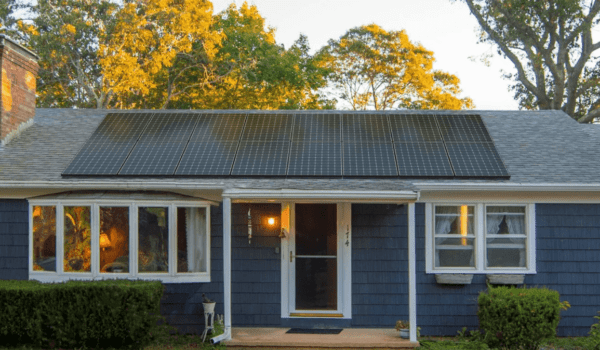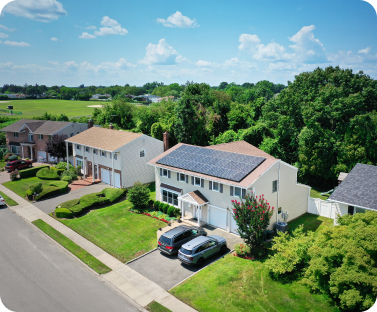

Before making the switch to solar energy, we’re often asked about the efficiency of our solar panels. Solar panel efficiency (also known as a solar panel’s “conversion rate”), indicates how much sunlight your panels are capable of converting into electricity that is usable in the home. Everyone wants to have the most efficient solar panels possible, and the electrical configuration, composition, and surrounding components of solar cells influence the production of electricity.
Solar panel efficiency is measured by the rate of energy coming from sun rays to individual solar cells over time, as they are converted into electrical power. Cells are tightly packed alongside each other inside glass rectangles designed to attract sunlight, energy is then converted and distributed throughout the home. The conversion rate of standard retail panels ranges from 11% to 22%. The conversion rate of Sunpower solar panels is rated at 22%.
SOLAR CELL TYPES
All solar panels are composed of silicon crystals that make up solar cells. The production rate of the individual solar cells is affected by whether monocrystalline silicon or polycrystalline silicon is used. Although this occurs on the molecular scale, it can be seen with the naked eye by looking at the cell’s coloring and shape.
Monocrystalline silicon is a solid crystal of silicon, similar to a slice of solid wood from a tree. Within that crystal, energy flows free from obstruction and self-generates at a faster rate. These solar cells appear consistent as one solid color and have “rounded” or slightly angled corners. This increases the thermodynamic efficiency, which means that cells are more productive in converting sun rays, or photons into usable energy.
Polycrystalline silicon is made up of fragments of crystals fused together, similar to a piece of wood particle board that is made up of tiny pieces of wood. Within these crystals, energy does not travel as freely because it is restricted by the individual fragments, causing it to generate at a slower rate. These cells have visible variations in blue coloring (indicating the fragments), and squared corners.
In most panels (polycrystalline and monocrystalline), visible metal strips are used to transport energy throughout the cell. These metal strips, called busbars, occupy precious real estate on the top of the cell and are unable to collect sun rays. This type of composition further reduces cell efficiency. SunPower solar cells use proprietary technology that does not require busbars on the top of the cell. The connectivity instead takes place on the back of the cell through a solid layer of copper, which also serves as protection against any impact from extreme weather conditions.
The top of the cell, instead has a unique light trapping surface that increases reflective efficiency. More light is captured and converted into energy, reducing the amount of light that bounces away. This holistic structure is referred to as Maxeon® Cell Technology, and allows the entire face of the cell to generate more power and achieve its 22% solar panel efficiency rating. It is clear to see why this is a higher quality cell, and a more worthwhile investment over the long term. It produces more energy and degrades slower.
SOLAR PANEL ROI: WHAT IS MY RETURN ON INVESTMENT?
Before installing a solar panel system it is important to consider how much energy are you looking to generate and what your home can support, based on roof or ground space, and shade covering from surrounding trees. Once you’ve decided on your system size, you will be able to calculate the cost of ownership over the life of your panel warranty, and compare it to the cost of buying electricity from the utility company over that same period of time.
Your solar payback period is determined by the time it takes to recover the initial cost of installing your system. We calculate the solar payback period by factoring your total system cost including all equipment, permitting, and associated labor—in conjunction with the value of government incentives and credits. This is then compared to the cost of electricity from your existing utility provider, and your electricity usage on your monthly electric bill.
Say goodbye to high-energy bills and hello to worry-free solar

Say goodbye to high-energy bills and hello to worry-free solar
About the Author
EmPower Solar develops, engineers, installs, and services solar and battery systems for residential and commercial clients. Since 2003, EmPower Solar has empowered thousands of New York homeowners and businesses with 47 megawatts of distributed solar. Its vision is to create a new energy paradigm powered by clean, renewable energy for a more prosperous, healthy, and civil world. The company culture is defined by the EmPowering Way, which results in consistent 5-star customer service reviews. For more information visit empower-solar.com.
